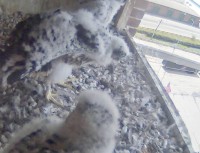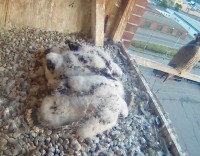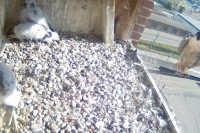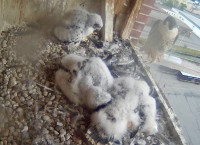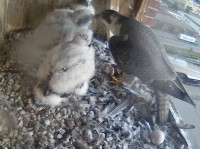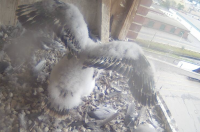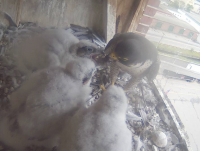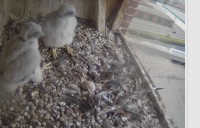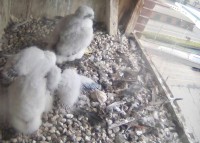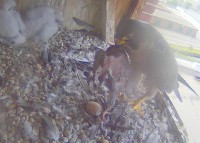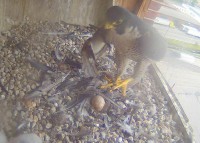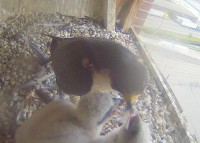Day 28: looking darker!
June 10, 2018 in In the Nest Box, lawrence peregrines
Another beautiful day for the young and growing peregrines under fair skies, calm winds, and temp at 57F just after sunrise at 5:07 AM. The forecast calls for sunny skies, with a high near 75. North wind around 5 mph.
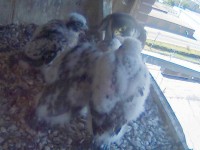 As they approach four weeks of age, the chicks are rapidly growing their juvenile feathers both below and above, and are looking visibly darker with each passing day. The chicks are nearing the midpoint of their transition from down-covered chick to juvenile-plumaged fledgling, and are nearly full-grown in terms of body size and weight.
As they approach four weeks of age, the chicks are rapidly growing their juvenile feathers both below and above, and are looking visibly darker with each passing day. The chicks are nearing the midpoint of their transition from down-covered chick to juvenile-plumaged fledgling, and are nearly full-grown in terms of body size and weight.
Around this time in the growth cycle, the chicks may sometimes join their parents in alarm calling instead of falling silent. They are able to follow the flight patterns of their parents outside the nest box. They will also become more vocal in calling for food. As we saw yesterday, they begin to grab or steal the incoming food offerings, and head away from the other chicks. Sleeping and dozing still occupy a large part of the day, but close huddling begins to diminish.
Literature cited:
Ratcliffe, D. 1993. The Peregrine Falcon. 2nd ed. Carlton, England: T. and A. D. Poyser.
The Canadian Peregrine Foundation, Peregrine Falcon Development – Age Guide; http://www.peregrine-foundation.ca/info/ageguide.html

